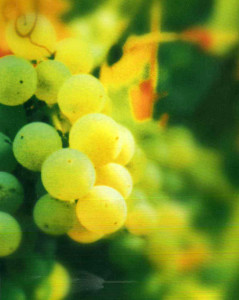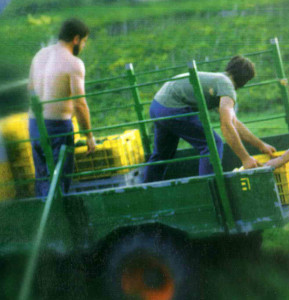
 In the areas and localities where wine production was significant, particularly in Araba and the south of Nafarroa, people would drink it almost every day. In Bizkaia and Gipuzkoa, on the contrary, wine had to be bought and brought in wooden barrels stacked in carts, so water from the source was the only drink, at least in everyday meals. In those houses where cider was produced, instead of water they drank the year’s cider until it finished. Wine was saved for special occasions.
In the areas and localities where wine production was significant, particularly in Araba and the south of Nafarroa, people would drink it almost every day. In Bizkaia and Gipuzkoa, on the contrary, wine had to be bought and brought in wooden barrels stacked in carts, so water from the source was the only drink, at least in everyday meals. In those houses where cider was produced, instead of water they drank the year’s cider until it finished. Wine was saved for special occasions.
Money to buy wine was scarce, and in many villages it was used as payment currency; for instance, the council would pay communal work with wine. Still nowadays those who volunteer during the yearly festival or some extraordinary event, or those who carry images or statues in processions are given free wine.
Since the beginning of the 20th century, consumption of wine expanded and became usual, but only amongst men; women and young girls and boys could not have it on its own but mixed with water.
In the olden days, wine was kept in forty-litre sheep or goat skins, both in bars and houses. In the bar wine was drunk from a jar with a long tapered spout, and in the house either from a jar or a wineskin. Now wineskins are only used to take to the mountain, a football match or an outing.
Azunbrea and kantara were wine measuring units; the former was equivalent to around two litres and the latter equalled approximately sixteen litres. Apart from those, other smaller measures were also employed: azunberdia or half an azunbrea, a quarter of an azunbrea, and kuartilua, popularly known as a person’s suitable share.
 It must be mentioned that wine is the most popular and widely consumed drink in the whole of Euskal Herria. Wine is not only drunk in the family environment, but also during the txikiteoa or poteoa practice or bar to bar visiting in the company of friends.
It must be mentioned that wine is the most popular and widely consumed drink in the whole of Euskal Herria. Wine is not only drunk in the family environment, but also during the txikiteoa or poteoa practice or bar to bar visiting in the company of friends.
As far as txakolina consumption is concerned, there was a great decrease in the last century, but over the last few years a significant recovery is perceived, mostly in the Bizkaian and Gipuzkoan coastlines.
In the past local txakolina or white wine used to be sold in farmhouses which ended up been known as txakolinak themselves. The opening of txakolina houses followed a well-established order: the first house would open business around the festivity of Saint Joseph; once its annual production was finished, a second house would start its sale, and so on. Each farm stayed opened for about a fortnight.
A bay branch at the door indicated that the farmhouse was open, and a long table was placed in the porch with benches for drinkers to sit down. The same happened with cider; even if in most farmhouses only enough for their own consumption was produced, there were always a couple of houses in the village called sagardotegiak where cider was served and sold. There still exist cider houses nowadays, particularly in Gipuzkoa. When the season arrives and the barrels get opened, the cider selling farmhouses become crowded with people from neighbouring villages, mainly at weekends, eager to taste it.
In any case, beware! “Ardoarekin, txakolinarekin edo sagardoarekin afaltzen duenak, urarekin gosaltzen du” (If you have dinner with wine, txakolina or cider, you are bound to have breakfast with water).


